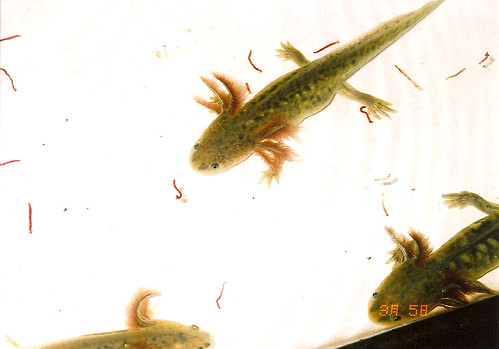Hi, John
I wish your experiment would be successful. The breeding way possibly depends upon the place where salamanders were caught, as you point.
After my 1st success, I thought temperature and increase in humidity might be important for breeding of my WC colony. And then, all the salamanders involving many F1 young adults were kept in "Kanuma-tuti" terrarium tanks, too dry for the other species to survive. In my next trial, when the spring came and the water temperature rose up to 13°C, I put the WC animals directly into the water (that is Henk`s hard way). They were just eager to get out of the water, and I stopped that. But the next "hard way" trial would be possibly successful. Henk, how many eggs did you get this year? One female can lay about 700-800 eggs in good condition. In my latest breeding success, a F1 female laid only 50-60 eggs. This was the first case. I don`t know exactly the reason the number of eggs was small.
My 3rd trial was successful. The way was the same as in my 1st trial. The same pair started to breed when the water temperature rose up to 13°C. But, all the animals did not take part in breeding. In this point, my way is not perfect.


